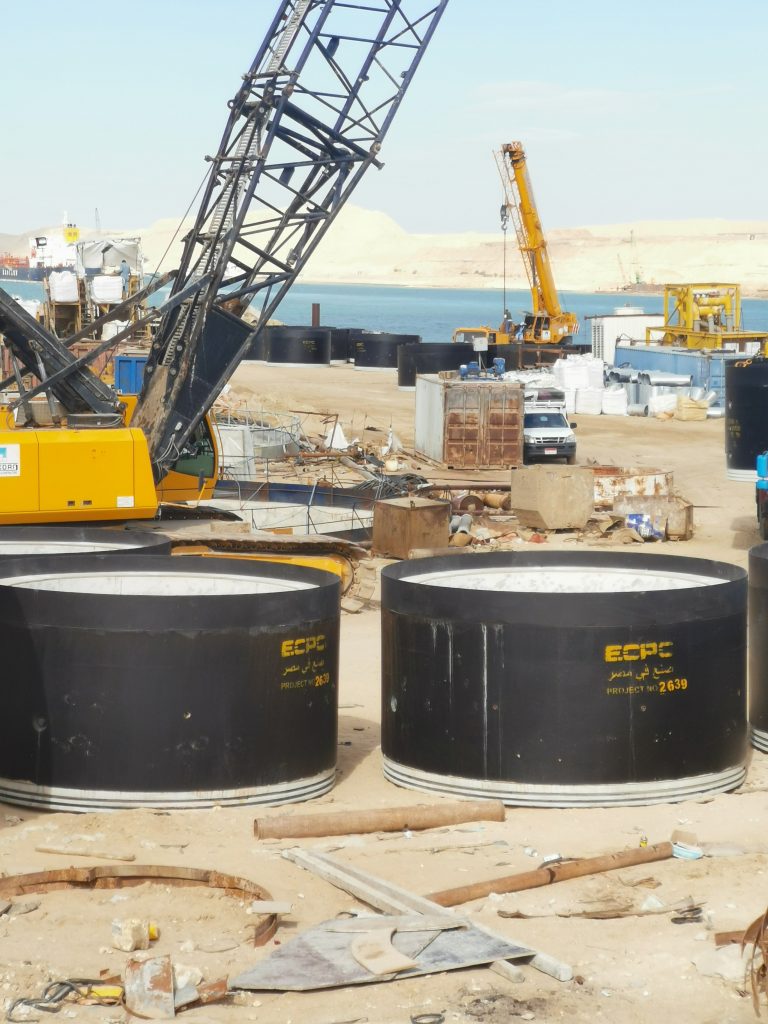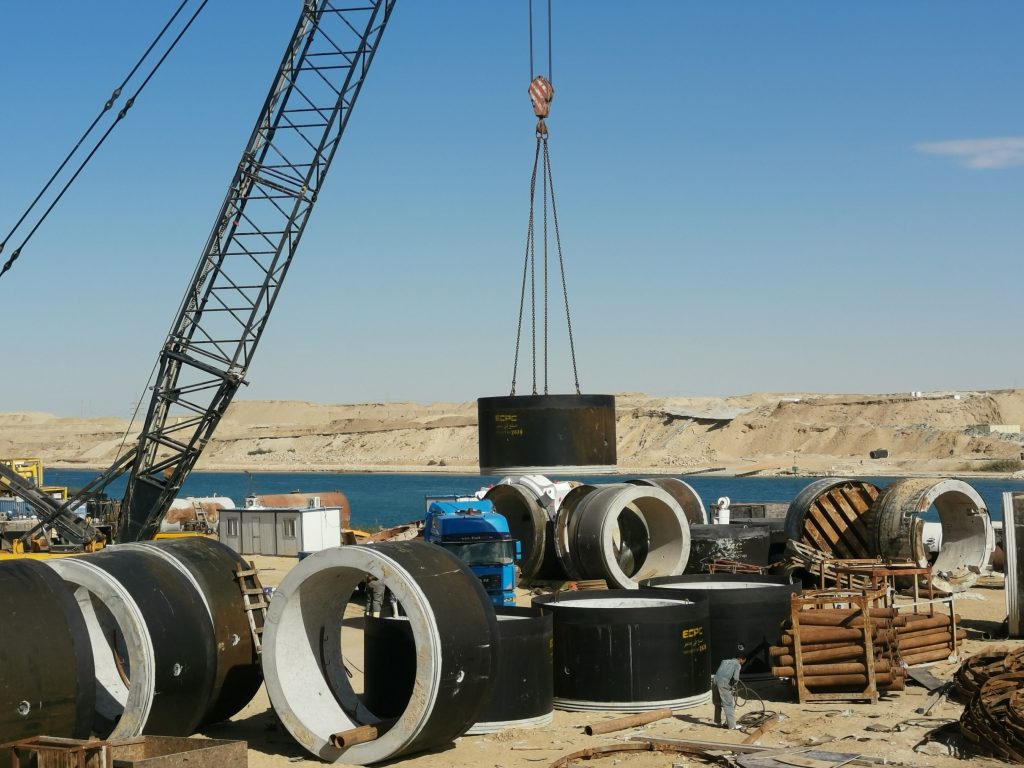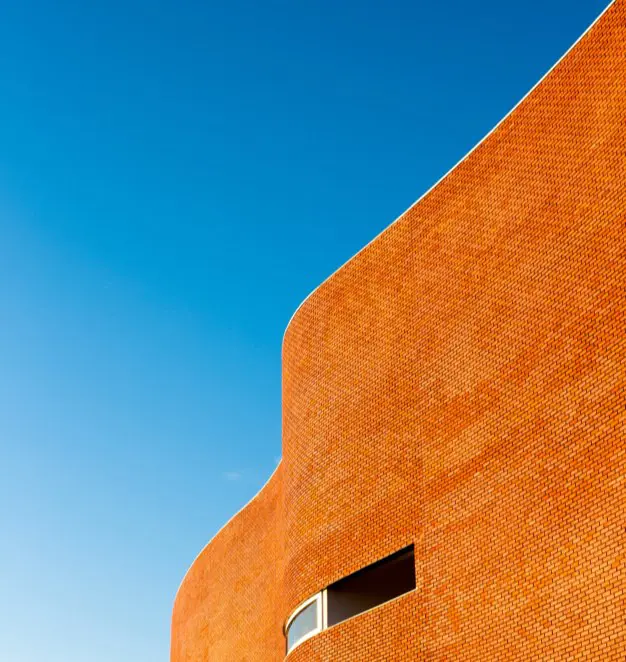Egyptian Armed Forces Engineering Authority
Concord For Engineering & Contracting
Pipes & Special Fittings
East of the Suez Canal, Egypt
Al-Mahsama Drain Water Treatment Plant in Serapeum
Project Overview:
The Al-Mahsama Drain Water Treatment Plant in Serapeum is a critical infrastructure project designed to address water management and agricultural needs in the East Suez Canal region. This plant treats drainage water from the Al-Mahsama Drain, transforming it into high-quality water suitable for agricultural irrigation. This project is a key component of Egypt’s efforts to expand agricultural land and enhance water resource efficiency in the Sinai Peninsula. The plant’s strategic location and advanced treatment processes contribute to sustainable development and food security goals.
Key Components:
Al-Mahsama Drain Water Treatment Plant project includes:
- Water intake and screening facilities.
- Advanced water treatment processes.
- Treated water storage and distribution systems.
- Serapeum siphon for water conveyance.
- Deep water wells and pumping stations.
- Control and monitoring systems.

ECPC’s Scope of Work:
ECPC played a crucial role in the construction of the Serapeum siphon, a vital element of this project. ECPC provided and installed all the necessary tunneling pipes for the jacking process, ensuring the successful installation of this critical water conveyance system. This involved two key phases:
Phase 1: Al Mahsama Crossing Line
ECPC provided and installed all the necessary tunneling pipes for the Al Mahsama crossing line, utilizing the jacking process for efficient installation. This critical section of the water conveyance system involved the supply of 2,300 meters of giant-diameter (3,200mm) Reinforced Concrete Jacking Pipes (RCPJ) with a dead-load capacity of 82 N/mm/lm. This included 952 standard jacking pipes, 153 jacking brakes, and 24 intermediate jacking stations.
Phase 2: Serapeum Siphon
Specifically, ECPC supplied 412 meters of giant-diameter (3,200mm) Reinforced Concrete Jacking Pipes (RCPJ) with a dead-load capacity of 82 N/mm/lm. This included 180 standard jacking pipes, 21 jacking brakes, and four intermediate jacking stations. These components were used to construct four massive water wells, each reaching a depth of 60 meters, to facilitate the reception and propulsion of water across the 420-meter Serapeum siphon.


